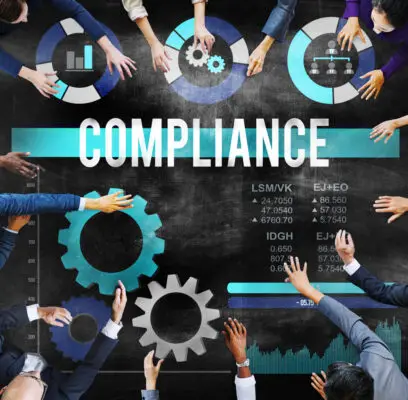Fleet risk assessments are an important part of running a successful business. An organization need to have a fleet risk management policy, the policy must be anchored in the enterprise risk management policy of the enterprise.
They help identify potential risks and develop strategies to mitigate them, ensuring the safety and security of your employees, vehicles, cargo, and other assets.
Step 1: Identifying Potential Risks
The first step in carrying out a fleet risk assessment is identifying potential risks. This includes things like vehicle maintenance, driver behaviour, third-party contractors, cargo loading/unloading, and more. It’s important to consider all factors that could pose a risk to your fleet.
For example, poor vehicle maintenance can lead to mechanical failure or even accidents on the road. Likewise, driver behaviour is another factor that must be considered when assessing your fleet’s overall risk.
Step 2: Analyzing Risk Level
Once you have identified all potential risks associated with your fleet, it’s time to analyze each one to determine its level of risk. This involves examining each risk individually and looking at factors such as frequency (how often will this particular risk occur?) and severity (what kind of damage could this cause?). Often derived from fleet risk management app.
Step 3: Implementing Solutions
Once you have determined the level of risk associated with each potential threat, it’s time to start implementing solutions to reduce those risks as much as possible. Depending on the type of threat being addressed, various solutions are available, ranging from increased safety protocols for drivers to better monitoring systems for cargo loads.
It’s also important to establish policies and procedures for dealing with any issues that may arise to ensure that everyone involved remains safe and secure at all times. The fleet risk management plan needs to be used for fleet operations, and the fleet risk manager is responsible for fleet management risks.
Carrying out a fleet risk assessment is an important part of any fleet safety management review. It involves identifying and assessing the potential hazards that could harm your fleet, evaluating the effectiveness of existing safeguards, and creating a plan to reduce or eliminate risks.
On-board telematics can also be used as part of a fleet risk management system. This technology allows for real-time driving behaviour monitoring so that any dangerous activities can be identified quickly and addressed appropriately.
Additionally, blocking certain roads or areas can help reduce the likelihood of accidents occurring in high-risk areas.
it is important to ensure that all staff know the importance of following safety procedures when operating vehicles to minimise risk. Regular training sessions should be held to ensure everyone understands their responsibilities regarding safe driving practices.
You might often ask yourself what made you leave this huge rig to manage it. In terms of managing risk, the most important element of the fleet of automobiles must be managed carefully. It can be an extremely difficult task for an employee in a fleet management role.

What Is a Fleet Risk Assessment?
A fleet risk assessment evaluates the risks associated with operating a fleet of vehicles. This includes assessing potential hazards, such as driver fatigue, distracted driving, and poor vehicle maintenance; identifying any regulatory requirements; and training drivers on these topics.
It also involves developing policies and procedures to help reduce or eliminate risks and monitoring how effectively those policies are being followed.
The Benefits of Fleet Risk Assessments
Carrying out regular fleet risk assessments can help you identify potential problems before they become real ones. Proactively managing your fleet’s risks can reduce the likelihood of accidents and injuries while improving employee morale and productivity.
In addition, by regularly carrying out assessments, you’ll gain valuable insights into which areas need improvement to ensure that your employees stay safe while operating your vehicles.
What Makes a compliant fleet?
You will want to consider four critical variables to keep a fleet compliant. The automobiles used in the operation of a business are the vehicles that must meet the requirements. Moreover, it needs periodic inspection, maintenance, and appropriate safety measures to ensure proper operation.
All employees working for business use should have appropriate driving education for all classes of vehicles assigned.
Driver Training: Regular and thorough driver training is essential for fleet compliance. Drivers should be trained on road rules, safe driving practices, and any relevant industry regulations. Fleet operators and fleet employeea must take the training both physical and on fleet management software.
Vehicle Maintenance: To ensure compliance, it is important to keep up with regular vehicle maintenance practices, such as checking oil levels, tire pressure, brakes, and lights.
Accident Reporting: Accidents should be reported quickly and accurately as part of a fleet’s compliance requirements. All documentation should be kept safely for later reference.
Risk Management Plan: A comprehensive risk management plan should be in place so the fleet can respond effectively to foreseeable and unforeseeable risks while adhering to all legal obligations.

What risks can your commercial fleet face?
The risk to a fleet may include any type of damage or loss to the reputation of the brand or its business.
Commercial fleets can face various risks, ranging from vehicle failure to accidents and theft. Vehicle failure can cause downtime that results in lost productivity and revenue. Accidents due to the negligence of a driver or other third party can lead to costly liability claims.
Theft of vehicles or cargo is a major concern for fleets, as it usually results in direct financial losses. Also, there can be longer-term reputational damage for the company if items are not insured properly.
The Importance of Effective Fleet Risk Management Services
As businesses expand and technology evolves, managing fleet risk effectively is an increasingly important factor for commercial success.
Fleet risk management services help organizations ensure the safety of their drivers and vehicles and protect their financial bottom line from potential costs related to accidents, injuries, and property damage. Here are some reasons why effective fleet risk management services are essential:
Reduce Accidents – By helping you identify potential risks before they become safety hazards, fleet risk management services can reduce the number of accidents your organization experiences. This helps protect your vehicles and drivers while saving money on excess insurance premiums or other costs related to an accident.
Monitor Driving Habits – Effective fleet risk management services utilize tracking systems that allow you to closely monitor your driver’s behaviour on the roads. This helps you take proactive steps towards keeping them safe while adjusting company policies or protocols where needed to address dangerous driving habits better before they become a major problem.
Streamline Compliance – With effective fleet risk management services in place, it’s easier for organizations to ensure their drivers are compliant with any applicable laws or industry regulations. This helps keep your business out of legal trouble and off the radar of regulators so that you can maintain good standing within the industry.
Improve Productivity – By monitoring road conditions and consolidating data from multiple sources, such as traffic alerts and fuel expenses, fleet risk management services make it easier for organizations to optimize their operations for maximum efficiency and productivity gains across their fleets in terms of time saved, fuel costs and insurance costs.
Incident management
Fleet risk managers must implement emergency management procedures in cases where a driver’s car is lost during an accident. Risk managers in fleets must define and implement predictive and reactive protocols and any public relations campaigns where necessary.
Can data play a role in fleet risk management?
Is it true? With the right management tools, managers can easily monitor compliance and safety information. While accessing the information can help achieve greater compliance, if the level of information provided has been increased, data is a key player behind the scenes.
In a vehicle analysis, drivers’ information and operational data can also be used to minimise risks and ensure compliance. The information can also be gathered through employee license information, health certificates, training, and competency.
Risk-management issues impacting fleets
Driver safety One problem fleet managers have to tackle is driver distraction, unfortunately still an important cause of accidents. Using new technology, distracted drivers can now see their surroundings in a vehicle.
The vehicle also includes dash cameras for improved safety driving. Fleet service and operation is an essential component of driver safety and efficiency.
Accidents: The most obvious risk for any fleet is the possibility of an accident. Accidents can lead to injuries, damage to property, and even fatalities. Proper training and attention to safety protocols are essential for avoiding these risks.
Maintenance Costs: Neglecting regular vehicle maintenance can lead to increased repair costs and decreased lifespan for the vehicle. Hence, it’s important for businesses to budget appropriately for this expense to avoid unexpected costs down the road.
Security Breaches: Cybersecurity breaches are a growing concern for fleets as they can lead to financial losses and endanger drivers’ security. Companies should make sure their.
Fleets have enhanced security measures in place, such as two-factor authentication or encryption software, that ensures that user data remains secure while stored in or accessed from the vehicle itself.
Theft: Vehicle theft is another potential risk that companies need to be aware of when it comes to managing fleets. Having appropriate tracking systems – both electronically and physically
in place can help reduce this type of theft by allowing companies easy access to the location of their vehicles at all times, as well as planning routes that minimize stops at known high-crime areas whenever possible.
Fleet Risk Management Solutions for Transportation Companies
A company must be able to identify risks before it can take steps towards them. An organization need to have a fleet risk management solution for fleet risks.
the probability of an incident or a risk that occurs is low, or the probability of a recurrence is very low. For example, a company dealing in transport may face engine problems or even lightning. All risks are manageable, although some are more pressing concerns than others.
Transportation companies face a variety of risks on the road, from sudden mechanical failures to unforeseen accidents. Fortunately, solutions available can help transportation companies manage these risks and ensure their success. Here are some of the top fleet risk management solutions for transportation companies:
1. Regular Vehicle Maintenance: One of the best ways to maintain your fleet is to have regular checkups and maintenance on all vehicles. These inspections should cover mechanical, and safety features so that potential risks can be identified early and addressed before they become an issue. Regular vehicle maintenance also helps reduce unexpected costs due to unforeseen mechanical failures.
2. Driver Training & Education: It is essential that drivers have a comprehensive understanding of the rules of the road and safe driving practices to minimize the risk of accidents or other incidents. Providing ongoing driver training and education can help mitigate risk and ensure your drivers are up-to-date on industry standards and regulations.
3. GPS Tracking & Monitoring: With GPS tracking systems, you can easily monitor your fleet’s location, speed, route deviation, fuel usage, idle time, etc., which will allow you to quickly respond to any potential issues or dangerous situations that arise during transport.
4. Real-Time Alerts & notifications: Real-time alerts and notifications are also helpful in identifying high-risk areas or potential hazards quickly so that appropriate action can be taken to prevent an accident or other incident from occurring.
Use On-Board Telematics
Previously, management rarely knew drivers’ behaviour at the speed limit without using fleet management systems. Performance reviews often accompanied speed tickets or late deliveries. It becomes more difficult to monitor driving performance using telematic devices. Telemaths may be useful in understanding driver behaviours, including speed and hard brake force.
The driver can access such metrics to determine how dangerous their car’s drive is. Telematic devices are designed to minimize accidents and prolong the car’s life span. It’s nice. Besides its benefits, Telematik has become more widely accepted.
Conclusion
Carrying out effective fleet risk assessments is essential for any business that relies on vehicles as part of its operations. By identifying potential threats and analyzing their individual levels of risk, businesses can develop strategies for mitigating those threats and keeping their fleets—and everyone involved—safe and secure. With the right approach and understanding of these concepts, businesses can ensure they remain successful well into the future.

Chris Ekai is a Risk Management expert with over 10 years of experience in the field. He has a Master’s(MSc) degree in Risk Management from University of Portsmouth and is a CPA and Finance professional. He currently works as a Content Manager at Risk Publishing, writing about Enterprise Risk Management, Business Continuity Management and Project Management.


